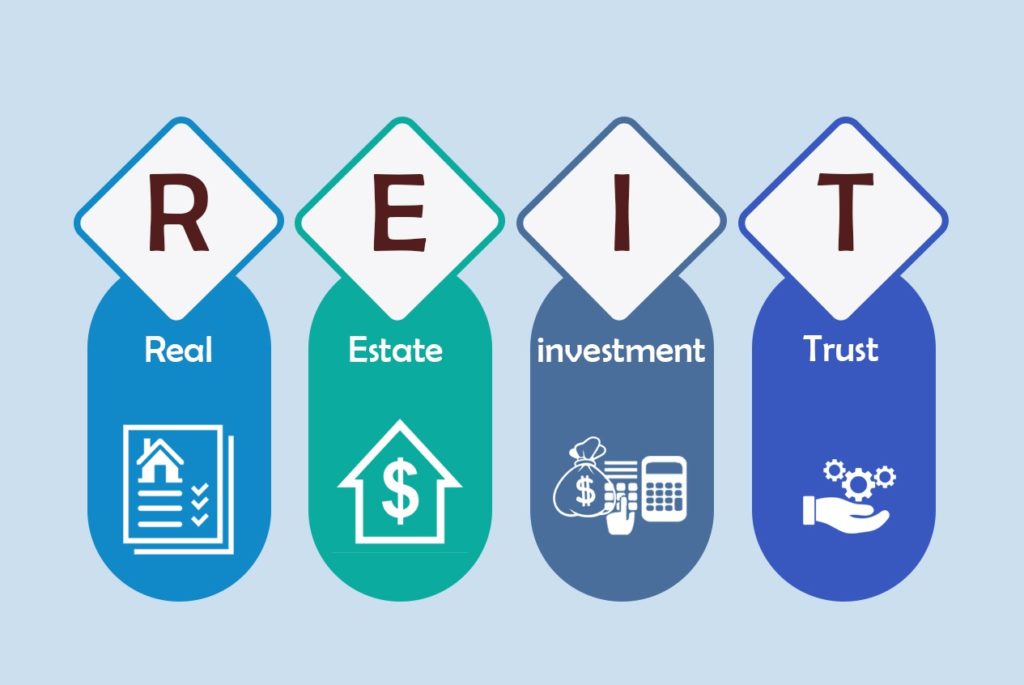Published by Nerd Wallet | February 4, 2025
Real estate investment trusts (REITs) allow investors to invest in commercial real estate without actually buying and managing properties themselves.
Real estate investment trusts (REITs) are companies that own real estate. You can buy shares in REITs similar to stock, and you mainly make money from REITs through dividends. REITs often own apartments, warehouses, self-storage facilities, malls and hotels. You can purchase REITs through an investment account, also called a brokerage account, similar to stocks.
How do REITs work?
Congress created real estate investment trusts in 1960 as a way for individual investors to own equity stakes in large-scale real estate companies, just as they could own stakes in other businesses. This move made it easy for investors to buy and trade a diversified real-estate portfolio.
REITs are required to meet certain standards set by the IRS, including that they:
- Return a minimum of 90% of taxable income in the form of shareholder dividends each year. This is a big draw for investor interest in REITs.
- Invest at least 75% of total assets in real estate or cash.
- Receive at least 75% of gross income from real estate, such as real property rents, interest on mortgages financing the real property or from sales of real estate.
- Have a minimum of 100 shareholders after the first year of existence.
- Have no more than 50% of shares held by five or fewer individuals during the last half of the taxable year.
By adhering to these rules, REITs don’t have to pay tax at the corporate level, which allows them to finance real estate more cheaply — and earn more profit to disburse to investors — than non-REIT companies can. This means that over time, REITs can grow bigger and pay out even larger dividends.
How much can I make with REITs?
When comparing potential returns it can be helpful to look at benchmarks. The S&P 500 is a collection of five hundred of the biggest U.S. companies. When you look at their collective performance, that’s how the S&P 500 has performed. The FTSE NAREIT All Equity REITs Index, similarly, tracks the performance of equity REITs. And from 1972 to 2019, REITs, on average, returned an 11.8% total annual return compared to the S&P’s 10.6%
That’s not to say that REITs are better than stocks — it’s simply one metric to look at. That being said, if you were to invest in REITs in addition to stocks, you would diversify your portfolio and likely be more protected against risk.
3 Types of REITs
REITs fall into three broad categories divided by their investment holdings: equity, mortgage and hybrid REITs. Each REIT type has different characteristics and risks, so it’s important to know what’s under the hood before you buy.
Equity REITs
Equity REITs operate like a landlord, and they handle all the management tasks you associate with owning a property. They own the underlying real estate, collect rent checks, provide upkeep and reinvest into the property.
2. Mortgage REITs
Unlike equity REITs, mortgage REITs (also known as mREITs) don’t own the underlying property. Instead, they own debt securities backed by the property. For example, when a family takes out a mortgage on a house, this type of REIT might buy that mortgage from the original lender and collect the monthly payments over time, generating revenue through interest income. Meanwhile, someone else — the family, in this example — owns and operates the property.
Mortgage REITs are usually significantly more risky than their equity REIT cousins, and they tend to pay out higher dividends.
3. Hybrid REITs
Hybrid REITs are a combination of both equity and mortgage REITs. These businesses own and operate real estate properties as well as own commercial property mortgages in their portfolio. Be sure to read the REIT prospectus to understand its primary focus.
Each REIT category can further be divided into three types that speak to how the investment can be purchased: publicly traded REITs, public non-traded REITs and private REITs.


